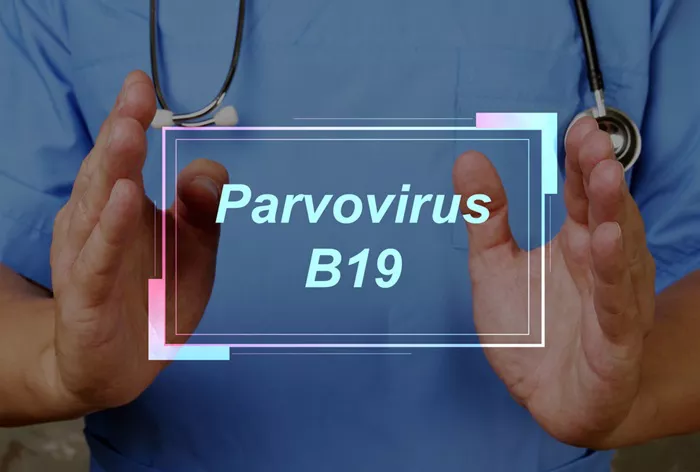The Centers for Disease Control and Prevention (CDC) has issued an urgent Health Alert, highlighting a significant increase in human parvovirus B19 activity across the United States. This respiratory virus, primarily spread through respiratory droplets, has shown an alarming rise in cases, particularly among children, pregnant individuals, and those with underlying health conditions such as sickle cell disease.
Background
Human parvovirus B19, a highly contagious seasonal virus, is transmitted through respiratory droplets from both symptomatic and asymptomatic individuals. While many cases of infection are asymptomatic, the virus can cause severe health complications in certain high-risk groups.
The CDC has reported that in the first quarter of 2024, several European countries observed an unusual surge in parvovirus B19 cases. Similarly, in the United States, where there is no routine surveillance for this virus, data from commercial laboratories and healthcare reports indicate a notable increase in parvovirus B19 activity. Specifically, there has been a marked rise in the presence of IgM antibodies—a marker of recent infection—across all age groups, with the most significant increase observed in children aged 5-9 years.
Health Risks
Parvovirus B19 is highly transmissible, with infection rates ranging from 20% to 50% during outbreaks in schools and other settings where close contact occurs. Historically, individuals working in environments with children, such as daycare centers and schools, have faced higher occupational risks.
The virus poses significant risks to pregnant individuals, as it can be transmitted to the fetus, potentially leading to adverse outcomes such as fetal anemia or even fetal loss, particularly when infection occurs between the 9th and 20th weeks of gestation. Furthermore, individuals with compromised immune systems or chronic hemolytic disorders, such as sickle cell disease, are at increased risk of severe complications, including aplastic anemia.
Current Situation
Recent reports to the CDC highlight an increased prevalence of parvovirus B19 DNA in plasma samples, rising from 1.5% in December 2023 to nearly 20% by June 2024. Additionally, there has been a surge in cases of parvovirus B19-associated complications among pregnant individuals and those with sickle cell disease, further underscoring the importance of heightened awareness and preventive measures.
CDC Recommendations
For Healthcare Providers
Maintain a heightened suspicion for parvovirus B19 in patients presenting with symptoms such as fever, rash, joint pain, or unexplained anemia.
Prioritize testing for individuals at higher risk, including pregnant individuals, immunocompromised patients, and those with chronic hemolytic disorders.
Inform patients and caregivers about the risks associated with parvovirus B19 and advise contacts of high-risk individuals to seek medical consultation.
Adhere to standard care guidelines for testing and managing pregnant individuals with suspected or confirmed parvovirus B19 infection.
Promote core prevention strategies, such as good hand hygiene and measures for cleaner air, to reduce the spread of the virus.
For Health Departments
Ensure that healthcare providers are informed about the rising parvovirus B19 activity and the associated risks.
Raise awareness among daycare centers and schools about the virus, including guidance on when infected individuals can safely return to these settings.
For the Public
Educate yourself about parvovirus B19 symptoms and understand the risk factors for severe disease.
Seek prompt medical attention if you are pregnant and exposed to parvovirus B19, or if you have a weakened immune system or chronic hemolytic disorder and develop symptoms.
Follow general respiratory precautions to minimize the spread of the virus, including considering mask-wearing in higher-risk settings.
Conclusion
As parvovirus B19 cases continue to rise, particularly among vulnerable populations, the CDC urges both healthcare providers and the public to remain vigilant. Early detection, preventive measures, and increased awareness are essential to mitigating the impact of this virus.
[inline_related_posts title=”You Might Be Interested In” title_align=”left” style=”list” number=”6″ align=”none” ids=”10934,10890,10855″ by=”categories” orderby=”rand” order=”DESC” hide_thumb=”no” thumb_right=”no” views=”no” date=”yes” grid_columns=”2″ post_type=”” tax=””]
































